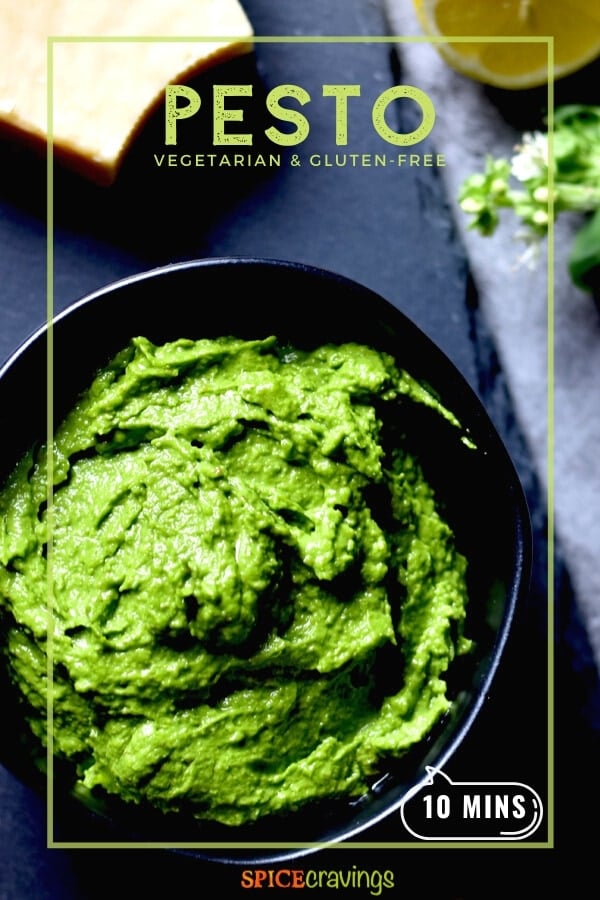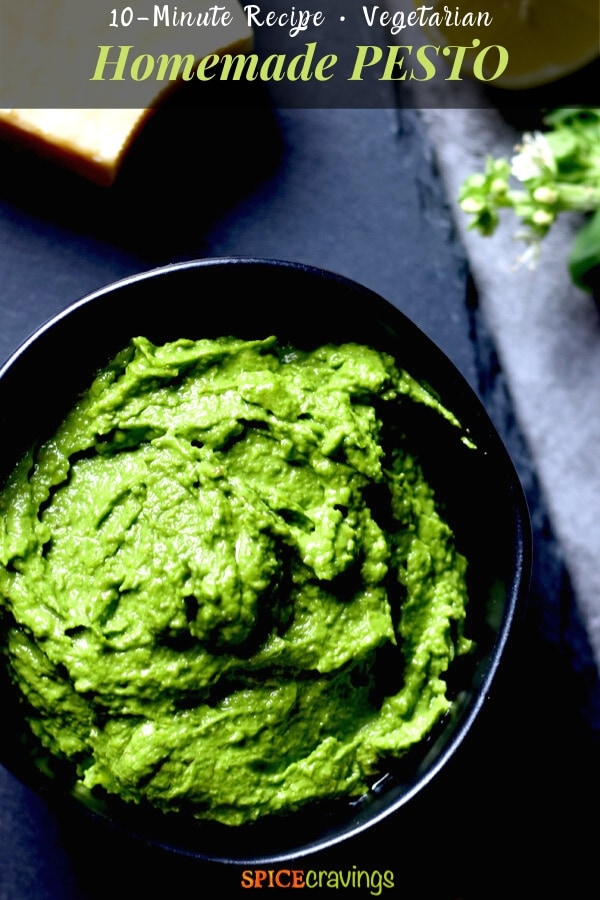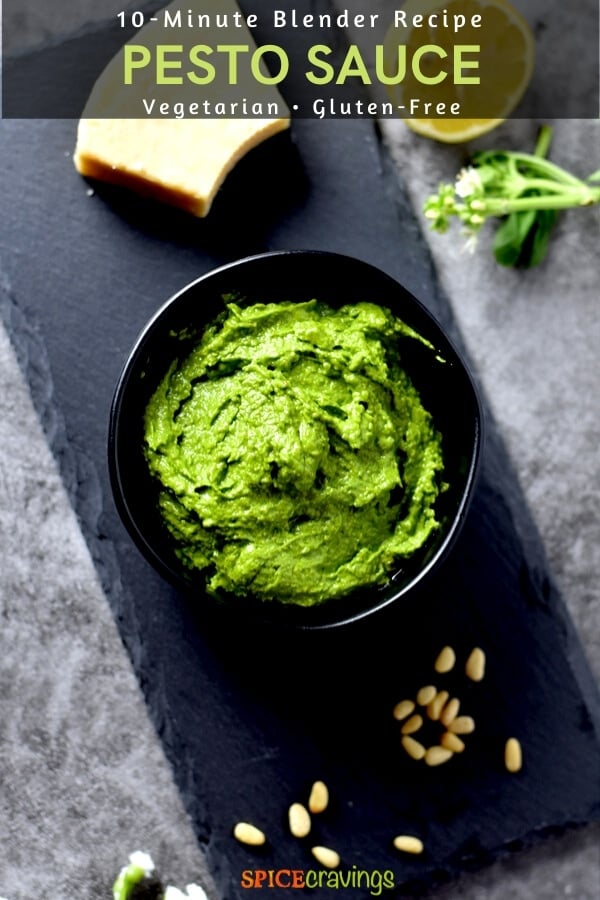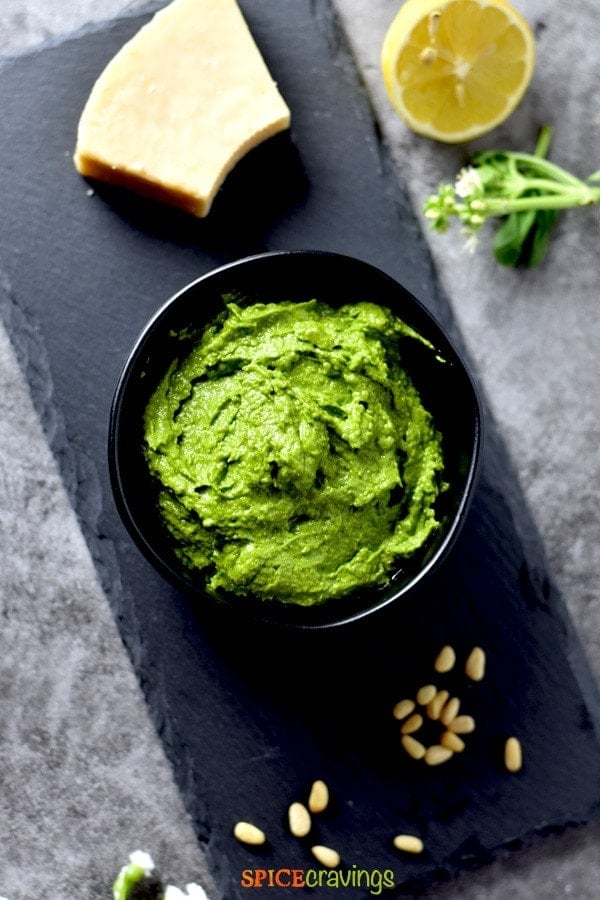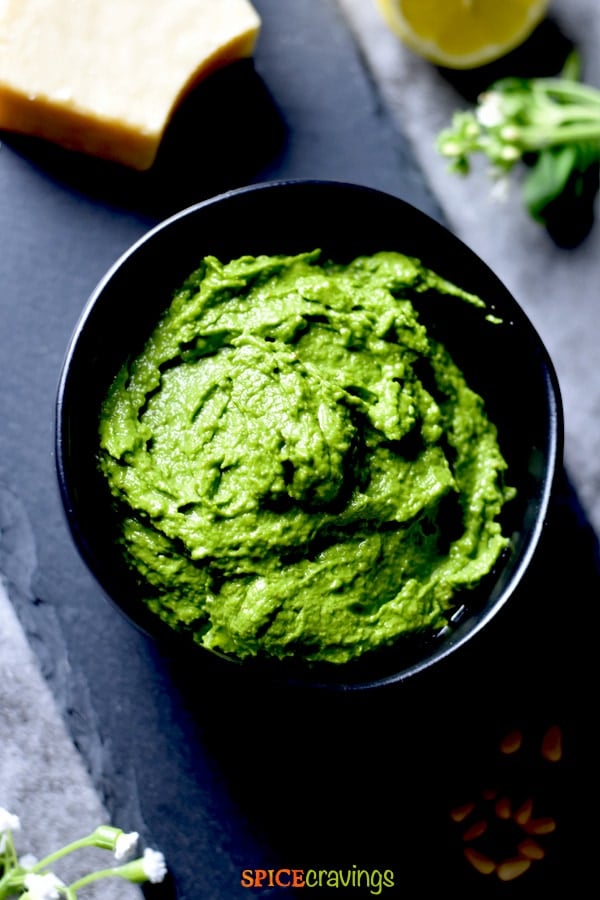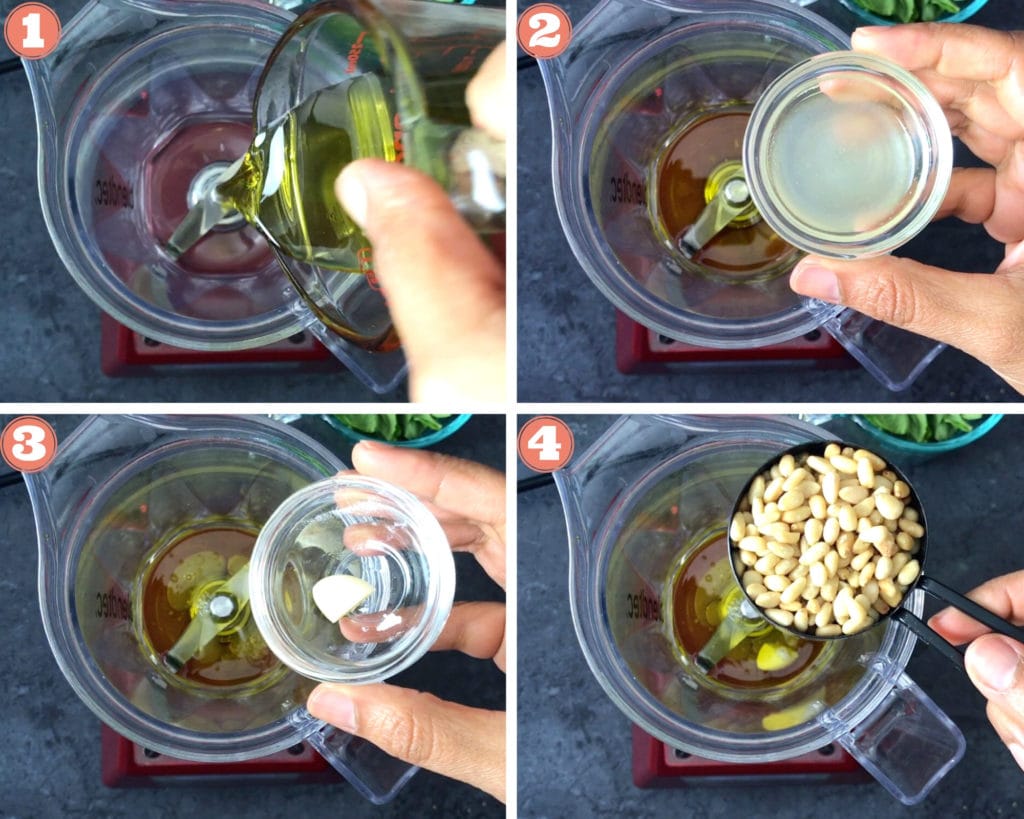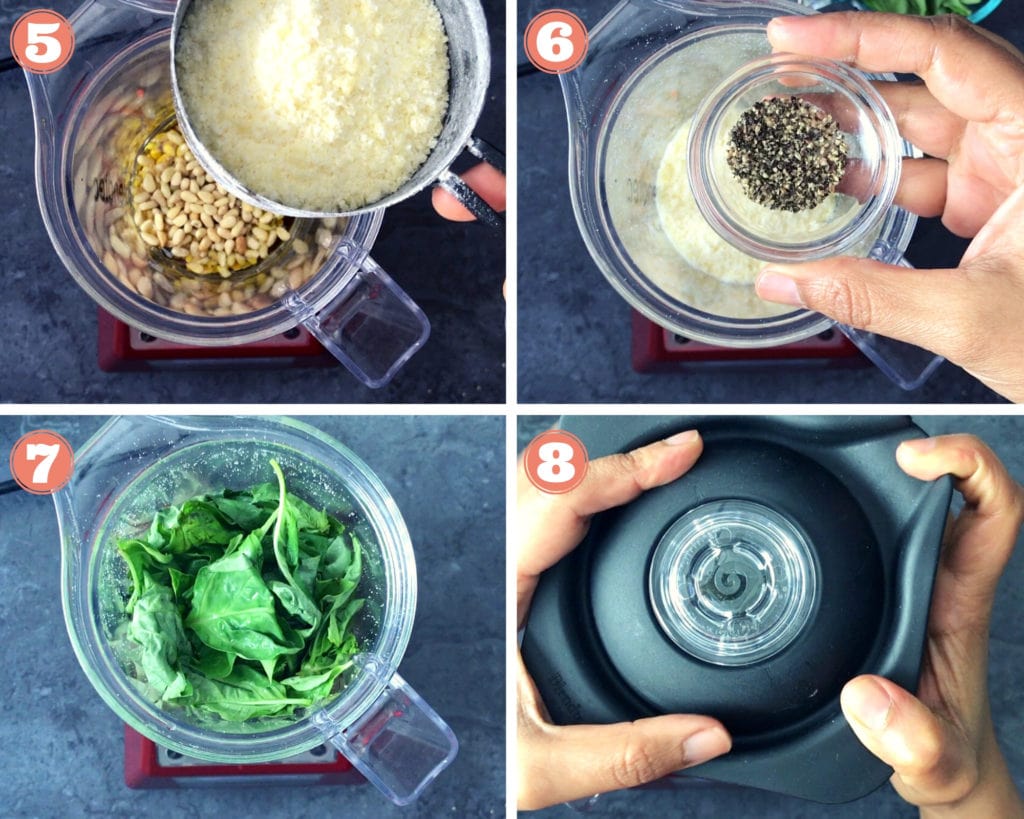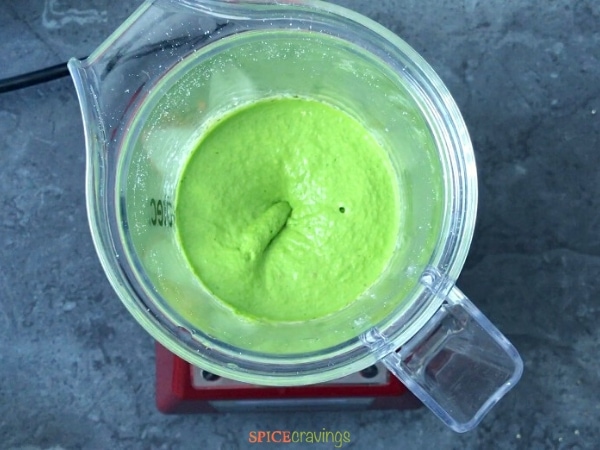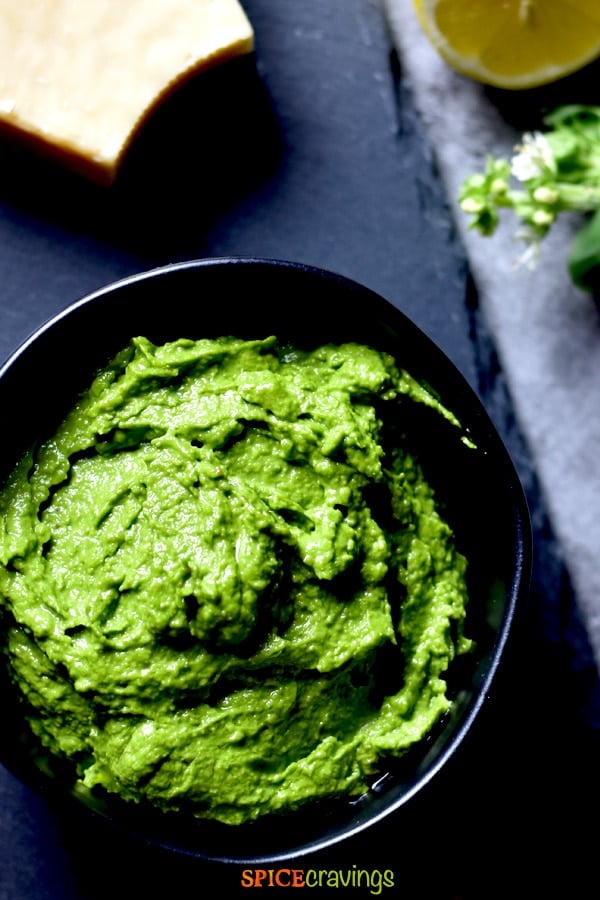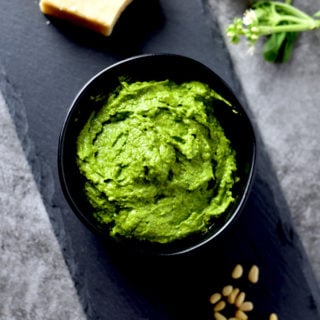Basil Pesto- A Classic Italian Recipe
Pesto really is a classic. And Italians know how to make it right.
A homemade pesto recipe is far superior to any jarred or store-bought variety. The flavors are simply cleaner, fresher and more herbaceous, especially during the summer months when basil is in its peak season. These days, we’re able to enjoy fresh basil pretty mush the whole year-round. Plus, it’s just another way I can incorporate some greens into our diets. With only 6 ingredients (not counting the salt + pepper) and a blender, you can have pesto made in only 10-minutes! That’s certainly quicker than a trip to the grocery store. It’s naturally Gluten-free and Vegetarian, and can be made Vegan, Dairy-Free, and Nut-Free with a few adjustments!
What Is Pesto?
Pesto originated in Liguria, Italy. Traditionally, it is made in a mortar and pestle. In fact, the word pesta literally means, “to pound.” The quintessential pesto recipe is known as pesto alla Genovese. It is made with Genovese basil, coarse salt, garlic, Ligurian extra virgin olive oil, European pine nuts and grated cheese, such as Parmigiana-Reggiano, Grana Padano, Pecorino Sardo or Pecorino Romano.
What’s So Special About Genovese Basil?
Genovese basil is a variety of the basil plant that is most popular for culinary uses and is known for a stronger flavor combination of anise and cloves. The name Basilico Genovese is protected by the European Union with the Denominazione di Origine Protetta (DOP) certification. In simpler words, it can only be labeled as such if it is the real thing. It is not necessary to seek out Genovese basil for this pesto recipe. But if you happen to come across it at the farmer’s market or specialty Italian market, by all means, buy it! In this recipe I am using fresh organic basil from good ol’ Trader Joe’s.
Is Pesto Sauce Healthy?
Although it is high in calories and fat, this simple sauce is loaded with nutrients from the greens, olive oil and nuts. With pesto, a little goes a long way though. When eaten in moderation, it is a healthy addition to any diet.
Homemade Pesto Ingredients
Traditional pesto alla genovese is made with only 5 ingredients - basil, pine nuts, cheese, garlic, salt and extra virgin olive oil. I like to add a bit more flavor with lemon and black pepper, but as we will soon learn, the recipes for this classic Italian sauce are endless! Today, you will need:
Extra Virgin Olive Oil: This is the purest form of olive oil from the first pressing of olives. Make sure to purchase a brand that is cold-pressed, preferably one from Italy or California.Lemon Juice: Although not traditional, this tiny quantity of fresh lemon juice adds acidity and brightness to this sauce. It also helps preserve the ‘green’ color for longer. It is optional, but I highly recommend it. Garlic: Raw garlic is very strong and astringent, so a little goes a long way! I recommend using one small clove or half of a large clove. If you prefer your pesto more ‘garlicky’, but all means, add more.Pine Nuts: Pine nuts are tender, buttery and high in fat. A little fun fact - they are actually pine cone seeds! Their only downside is that they are expensive. I recommend going to your nearest Whole Foods or grocery store with a bulk foods department and purchase only the amount you need. (Tip: Store the leftover pine nuts in the cheese drawer of your fridge.)Parmesan Cheese: Salty, nutty and creamy, it tones down the strong licorice, anise flavor of fresh basil. For exceptional quality and authenticity, purchase Parmigiana-Reggiano with the signature rind from the cheese counter of your grocery store. This signifies it is the real cheese imported from Italy.Salt: Coarse cracked sea salt is the best. Start with ¼ teaspoon and adjust the seasoning as necessary. But don’t make a special trip for that, you can always use regular table salt too.Black Pepper: Another one of my own personal additions. Freshly ground will be stronger, so ¼ teaspoon is all you need. Basil Leaves: The star of the show! For best results, purchase the basil the day you are going to make the pesto sauce (although, there are benefits to freezing the basil, too). My favorite sources for affordable fresh basil are Trader Joe’s, farmer’s markets or your local grocery store that sells those small basil plants. Make sure to gently wash the basil in cold water and dry thoroughly. If there is excess water on the basil, it will ruin the texture and dilute the flavor of the sauce. Read ahead for tips on how to wash basil.
Tips on How to Wash Basil
Basil is one of those herbs that bruises very easily. So one has to be careful while washing it. I wash it in a large bowl of cold water, or fill up my salad spinner. I wash it gently, then give it a gentle spin in the salad spinner, or use a large colander to shake off the excess moisture. Then, I spread the leaves on a paper towel and let it air dry while I gather the other ingredients.
What Can Be Substituted For Pine Nuts In Pesto?
Pine nuts are a lovely addition to this pesto sauce recipe, but they are expensive and have a unique taste. Some cheaper and more neutral-flavored alternatives would be to use raw, unsalted almonds, walnuts, pecans or pistachios. The almonds will give you the most neutral flavor.
Is Cheese Vegetarian?
Although most people assume cheese is vegetarian because it is only made from the milk of either cows, sheep or goats, not all cheeses are created equal. Some, like Parmigiana-Reggiano, are made with animal rennet, rather than vegetarian rennet. If you would like to make this pesto recipe completely vegetarian, Whole Foods and BelGioioso offer vegetarian cheese varieties.
How To Make This 10-Minute Pesto Sauce
Rather than crushing all the ingredients by hand, all you need is a blender and 1 minute to reach pesto heaven.
Add extra virgin olive oil, lemon juice (optional), garlic and pine nuts to your blender (pics 1-4).
Then, add the cheese, salt, pepper and basil leaves (pics 5-7).Tightly seal the lid and blend until smooth, about 30 seconds (pic 8). If necessary, stop the blender and scrape down the sides with a silicone spatula halfway through.
Different Pesto Recipes - Variations of Basil Pesto
The beauty of pesto (besides its beautiful green color) is the many different ways to make it. Depending on the flavor profile you want or dietary restrictions, you can make this pesto recipe in any one of the following ways:
Try a different nut or seed. Pine nuts are creamy and delicious, but as mentioned before, using a different nut or seed will add a unique take on your pesto. I like to use raw almonds, walnuts, pecans, or pistachios, and for a nut-free recipe, pepitas or sunflower seeds are a great option.Swap out the cheese or omit it altogether. Use another hard cow’s milk cheese such as Grana Padano (which is less expensive than Parmigiana) or substitute a sheep’s milk cheese such as Pecorino Sardo or Pecorino Romano. Use a different green. I am always looking to incorporate more greens into our diets and pesto is one of the greatest ways to achieve that. Rather than basil, use a combination of herbs such as cilantro, mint and parsley or change it up with hearty greens such as spinach, kale or arugula.
Some popular variations that I have tried successfully are: Walnut Pesto, Cilantro Pesto, Kale Pesto, Arugula Pesto and Spinach pesto.
How To Serve Pesto - Uses of Pesto
Pesto is a sauce, so it is best served tossed or smeared on a variety of entrees. Try:
Tossing with your favorite pasta. Mix the pesto with ½ cup of the starchy pasta cooking water in the bottom of a large serving bowl, add cooked and drained pasta, toss and enjoy! Check out this detailed post on Pesto Pasta possibilities. Adding to chicken, meat, fish or vegetables. Simply roasted meat and veggies can get a flavor and nutrition boost with pesto. Just cook your protein and vegetables as desired and top with a few tablespoons of fresh pesto.Smearing on sandwiches. Use it as a condiment on sandwiches, crostini, wraps and more.
How To Store Pesto
For best results, store the pesto in the smallest container possible (this limits oxidation and the amount of air that can get to the pesto, preventing it from turning black). Drizzle a layer of olive oil on the surface or press a piece of plastic wrap directly onto the pesto, cover and refrigerate for up to 1 week.
Freezing Pesto
For longer storage, pesto can be frozen for up to 3 months. Store in ice cube trays or any air-tight container and freeze it.
Recipe Tips for the Ultimate Pesto Recipe
Pour in the liquid ingredients first. This makes it easier on the blade and creates a smooth, emulsified sauce.Toast the nuts. This is completely optional, but toasting the nuts enhances their flavor and adds an extra-savory edge. To toast pine nuts, place in a single layer on a baking sheet in a 350 degree F oven for 5-7 minutes, or until lightly golden brown and fragrant, or, microwave for 2 minutes. Make sure to cool completely before adding to the blender.Scrape down the sides of the blender. Occasionally, bits of basil or nuts will get stuck to the sides and bottom of your blender. Simply scrape down the sides and bottom of the blender about halfway through and continue blending until smooth.
More Sauce Recipes From My Kitchen
Instant Pot Pasta SauceEasy Bolognese SauceIndian Curry SauceCilantro Chutney
More Italian Recipes From My Kitchen
Frittata MuffinsPasta Fagioli SoupRavioli LasagnaInstant Pot Minestrone Soup
📖 Recipe
